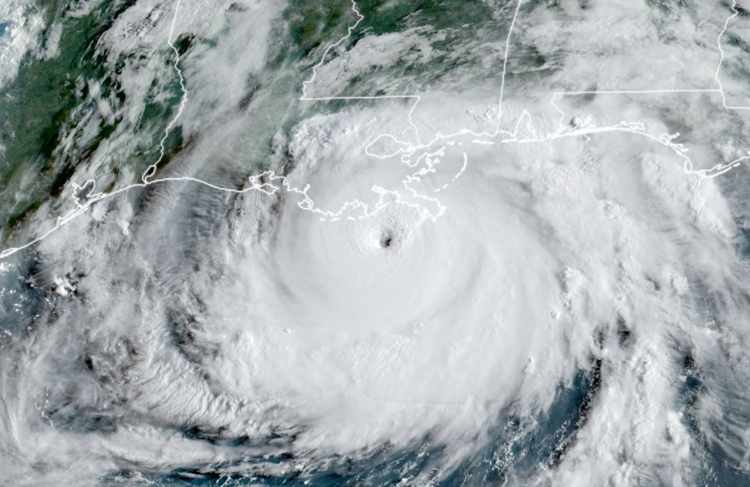Hurricane forecast for 2022 season lowered by TSR

Tropical Storm Risk, another of the insurance and reinsurance industry watched seasonal forecast teams, has now lowered its seasonal forecast for the 2022 Atlantic hurricane season, becoming the third forecaster to do so.
Earlier this month, forecasters at NOAA and the US National Hurricane Center, and the Colorado State University’s tropical meteorology team led by Phil Klotzbach, both reduced their forecast numbers for the 2022 hurricane season.
Tropical Storm Risk (TSR) had only elevated its forecast to 18 named storms, now 9 hurricanes and 4 major hurricanes with Accumulated Cyclone Energy (ACE) is forecast to be 150, back in early July.
Just over a month later, the latest update from TSR now calls for a reduced 17 named tropical storms, 8 hurricanes and 3 major hurricanes to form this Atlantic season, while the ACE forecast has also been lowered to 130.
Of course, the major driver of the reduced numbers is the now shortened amount of the season left, after a relatively slow start thanks to conditions not being conducive to storm formation and dry air and Saharan dust hampering the main tropical development zone.
TSR said that it now “anticipates a season with activity close to the 1991-2020 climate norm.”
But qualified that by stating, “Although significant uncertainties remain, we consider that the more likely scenario is for tropical North Atlantic and Caribbean Sea waters to be slightly warmer than normal by August-September 2022, and for moderate La Niña conditions to persist through August-September-October 2022, contributing to reduced vertical wind shear over the tropical North Atlantic and Caribbean Sea.
“Both these factors are expected to enhance North Atlantic hurricane activity in 2022.”
Further explaining that, “La Nina conditions through autumn tend to enhance late season activity though this is not guaranteed. An additional factor favouring above- average activity in 2022 is the unusual early development of a potential tropical cyclone in the Atlantic Main Development Region (MDR) in June. It should be noted that uncertainty is higher than normal at this lead time due to the presence of contradictory climate signals.”
But also saying that, “The tropical Atlantic and Caribbean trade winds have been stronger than normal through July, and if this persists through August and September, it will act to reduce hurricane activity through increased vertical wind shear and cooling of tropical Atlantic sea surface temperatures. The August forecast has been reduced on this basis.”
The TSR view of landfall probabilities has not changed though, with the forecaster continuing to call for 4 named storms and 2 hurricanes to make landfall on the United States, which remains above long and near-term averages.
We’ve added this latest seasonal forecast update to our page where you can track the season as it develops and access tracking maps and other storm specific information as they form, which lowers the Artemis average across them all to 18 named storms, 8 hurricanes and 4 major hurricanes, with Accumulated Cyclone Energy (ACE) of 149.
That’s a decline in named storms of 1 and a decline in ACE of 10, since our last update.
As expectations for 2022 Atlantic tropical storm and hurricane activity come down somewhat, the reality is that the forecasts continue to call for a relatively active year and as it just takes one storm to cause a significant insurance and reinsurance market loss, with the potential for knock-on loss effects to ILS funds and catastrophe bonds, the market will continue to be keenly focused on the tropics for the months ahead.
Clearly the shorter the season that is left, the lower the probabilities would suggest of major landfalls, but it will only take one storm for the industry to really test its pricing and whether it has accounted for inflationary factors in it this year.
There are still signs of some tropical activity springing up in the Atlantic over the next couple of weeks, according to long-range forecast models.
Currently, the NHC gives a 30% chance of a tropical wave south-west of the Cabo Verde islands becoming a named tropical storm.
Forecast models seem to favour development at this time, so the disturbance should be monitored for now.
So the insurance, reinsurance and ILS industry could have something tropical to watch out for in the coming week or so. We’ll update you should anything of note form in the tropics.
Track the 2022 Atlantic tropical storm and hurricane season on our dedicated page and we’ll update you as new information emerges.
——————————————————————— Tickets are selling fast for Artemis London 2022, our first ILS conference in London. Sept 6th, 2022.
Tickets are selling fast for Artemis London 2022, our first ILS conference in London. Sept 6th, 2022.
Register soon to ensure you can attend.
Secure your place at the event here!
—————————————






